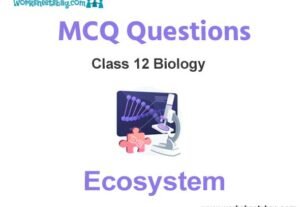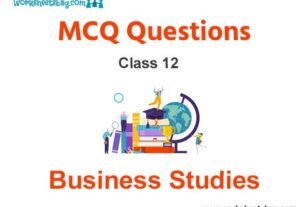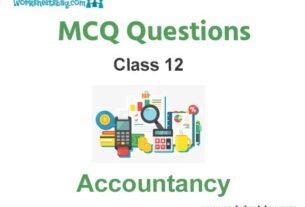Please refer to An Elementary School Classroom in a Slum MCQ Questions Class 12 English below. These MCQ questions for Class 12 English with answers have been designed as per the latest NCERT, CBSE books and syllabus issued for the current academic year. These objective questions for An Elementary School Classroom in a Slum will help you to prepare for the exams and get more marks.
An Elementary School Classroom in a Slum MCQ Questions Class 12 English
Please see solved MCQ Questions for An Elementary School Classroom in a Slum in Class 12 English. All questions and answers have been prepared by expert faculty of standard 12 based on latest examination guidelines.
Question. Identify the literary device in ‘slums as big as doom’.
A) simile
B) metaphor
C) alliteration
D) personification
Answer
A
Question. Identify the literary device in ‘father’s gnarled disease’.
A) simile
B) metaphor
C) alliteration
D) personification
Answer
B
Question. Who is the unlucky heir and what has he inherited?
A) a fat boy, has inherited obesity from his mother
B) a short, thin boy, has inherited stunted growth from his family
C) an intelligent boy, has inherited intelligence
D) thin boy with rat’s eyes, has inherited a deformed body from his father
Answer
D
Question. What does the expression ‘Break O break open’ suggest?
A) barriers on the road
B) barriers of garbage heap
C) barriers of dirty environment must be broken
D) None
Answer
D
Question. How can powerful people help the poor children?
A) by fighting with the government
B) by fighting with the powerful
C) by bridging gaps of inequalities and injustice
D) by fighting with the rich
Answer
C
Question. What is the role of the capitalist government, as in the poem ‘An Elementary School’?
A) To supply equal opportunity for education
B) To impart free education
C) To distribute books & stationery
D) All of the above
Answer
A
Question. Identify the literary device in ‘spectacles of steel’.
A) simile
B) metaphor
C) alliteration
D) personification
Answer
B
Question. In what sense are the slum children different?
A) their IQ
B) their wisdom
C) their dresses
D) because of no access to hope and openness of the world
Answer
D
Question. What is the poet’s demand in the poem ‘An Elementary School’?
A) equal opportunities for education for the poor and the underprivileged
B) Social injustice
C) Class difference
D) None of the above
Answer
A
Question. Mention any two images used to explain the plight of the slum children.
A) open handed map
B) from his desk
C) belled, flowery
D) foggy slums and bottle bits on stones
Answer
D
Question. ‘Break O break’. What should they break?
A) the donations
B) all bathers
C) the slums
D) the schools
Answer
B
Question. ‘Break O break’. What should they break?
A) the donations
B) all bathers
C) the slums
D) the schools
Answer
B
Question. What kind of look do the faces and hair of the children give?
A) rich and beautiful faces
B) bright, neat faces
C) healthy appearances
D) pale faces, scattered and undone hair
Answer
D
Question. Who sits at the back of the class?
A) a sweet and young pupil
B) a paper seeming boy
C) a tall girl
D) a girl with hair like rootless weeds
Answer
A
Question. The color of sour cream is
A) white
B) yellow
C) off-white
D) pale
Answer
C
Question. What question does the poem ‘An Elementary School’ raise?
A) The value of education in a slum
B) Social distancing
C) Class equality
D) Social justice
Answer
A
Question. What does paper-seeming boy mean?
A) had a paper in his hand
B) was as thin as a sheet of paper
C) was white in colour like a sheet of paper
D) All of these
Answer
B
Question. What does the poem ‘An Elementary School’ not dwell upon?
A) Optimism
B) Pessimism
C) Favoritism
D) None of the above
Answer
B
Question. What does the poem ‘An Elementary School’ attack on?
A) the capitalist economies
B) the rich are becoming richer
C) more & more problems are increasing in the lives of poor’s
D) All of the above
Answer
D
Question. What attracts the slum children?
A)The animals
B) The movies
C) ice cream
D) All beautiful things like ship, Sun
Answer
D
Question. Who is ‘the unlucky heir’ in the poem ‘An Elementary School’?
A) The thin slum boy
B) The poet
C) The children
D) None of the above
Answer
A
Question. What other freedom the poet wants the slum children to enjoy?
A) Freedom of roaming
B) freedom to spend money
C) freedom to eat
D) freedom of knowledge, wisdom and expression
Answer
D
Question. ‘Awarding the world its world’ what do these words express?
A) the world is ours
B) the world is yours
C) the world belong to the poor
D) the world belongs to the rich
Answer
D
Question. How are slum children uncared for, as in the poem ‘An Elementary School’?
A) Like rootless weeds
B) Like dry flowers
C) Like dry leaves
D) None of the above
Answer
A
Question. Who was sitting at the back of the dim class?
A) a girl
B) an old man
C) a teacher
D) a young boy
Answer
D
Question. ‘On sour cream walls. Donations’ suggests
A) schools are well equipped
B) schools are small but they try to impart education
C) schools have a poor and ill-equipped environment
D) schools meet the education requirements of the children through donations
Answer
C
Question. His eyes live in a dream- what is the dream?
A) watching a movie
B) going abroad
C) eating ice cream
D) dream of better times with games and open spaces
Answer
D
Question. Identify the literary device in ‘whose language is the sun’.
A) simile
B) metaphor
C) alliteration
D) personification
Answer
B
Question. Identify the literary device in ‘whose language is the sun’.
A) simile
B) metaphor
C) alliteration
D) personification
Answer
B
Question. What do the ‘governor’, inspector, visitor’ in the poem depict?
A) higher officials
B) Government officials
C) Political people
D) Powerful and influential people
Answer
D
Question. The poet of the poem ‘An Elementary School’ expresses his ideological positions on ______.
A) Social norms
B) government, economics, and education
C) Equality
D) Injustice
Answer
B
Question. What kind of future do the slum children have?
A) very hopeful
B) bright
C) clear like water
D) hopeless and uncertain
Answer
D
Question. The imprisoned minds and lives of the slum children can be released from their bondage if they are given an experience of the outer world.
A) never
B) soon
C) eventually
D) magically
Answer
D
Question. What are the underprivileged children compared to in the poem ‘An Elementary School’?
A) Gusty waves
B) Exuberant
C) Energetic
D) All of the above
Answer
D
Question. What does the poem describe?
A) A classroom in a slum area
B) social setup of India
C) different mindsets
D) beauty of the surroundings
Answer
A
Question. What does the poet want?
A) to send the children out of the slums
B) to send the children to America
C) to send the children to open fields
D) to send the children to a beach
Answer
D
Question. What do the words ‘From fog to endless night ‘ mean?
A) bright light outside
B) bright future
C) hopelessness
D) Dark and uncertain future of slum children from birth to death
Answer
D
Question. ‘The stunted unlucky heir of twisted bones’ means the boy
A) is short and bony
B) is poor and unlucky
C) is sad and unwell
D) has an inherited disability
Answer
D
Question. Why are the pictures and maps meaningless?
A) they are fake and show a false thing
B) they are old and have faded away
C) they show vastness which is opposite to the world and needs of the children in the classroom
D) All of these
Answer
C


